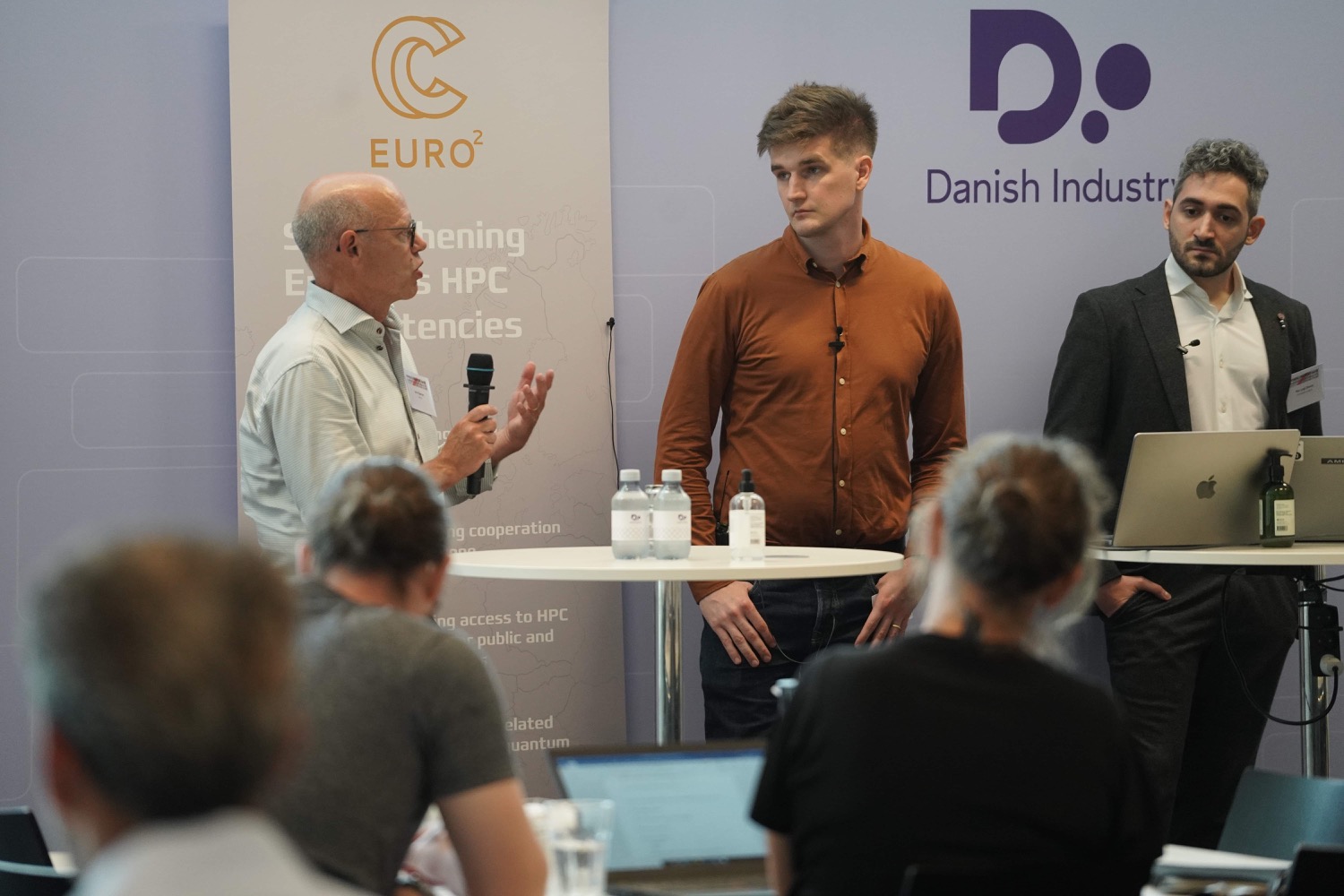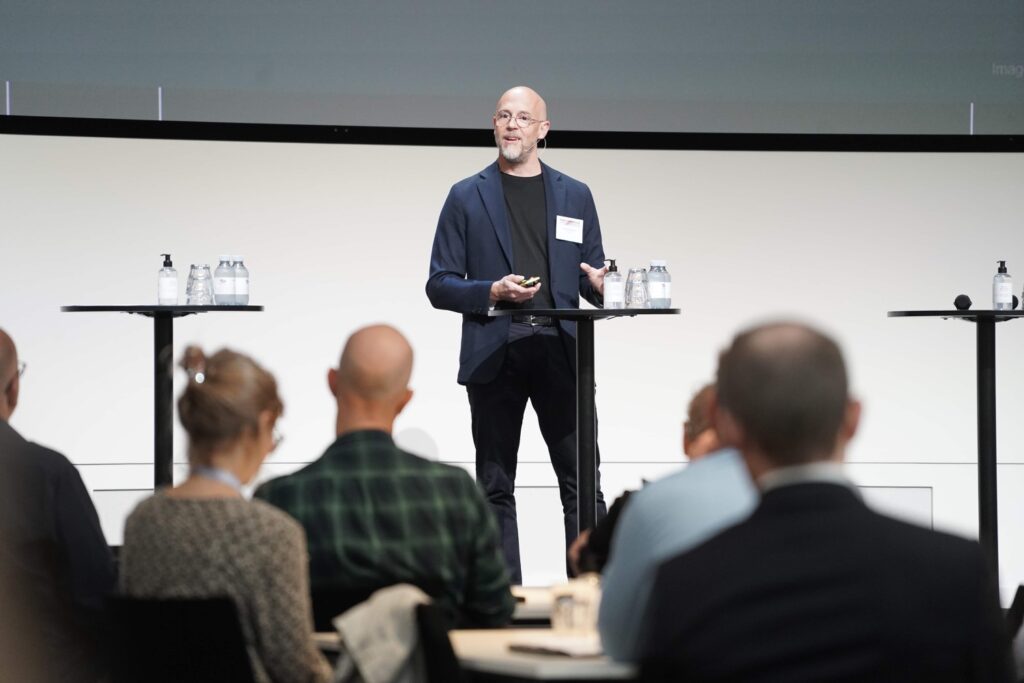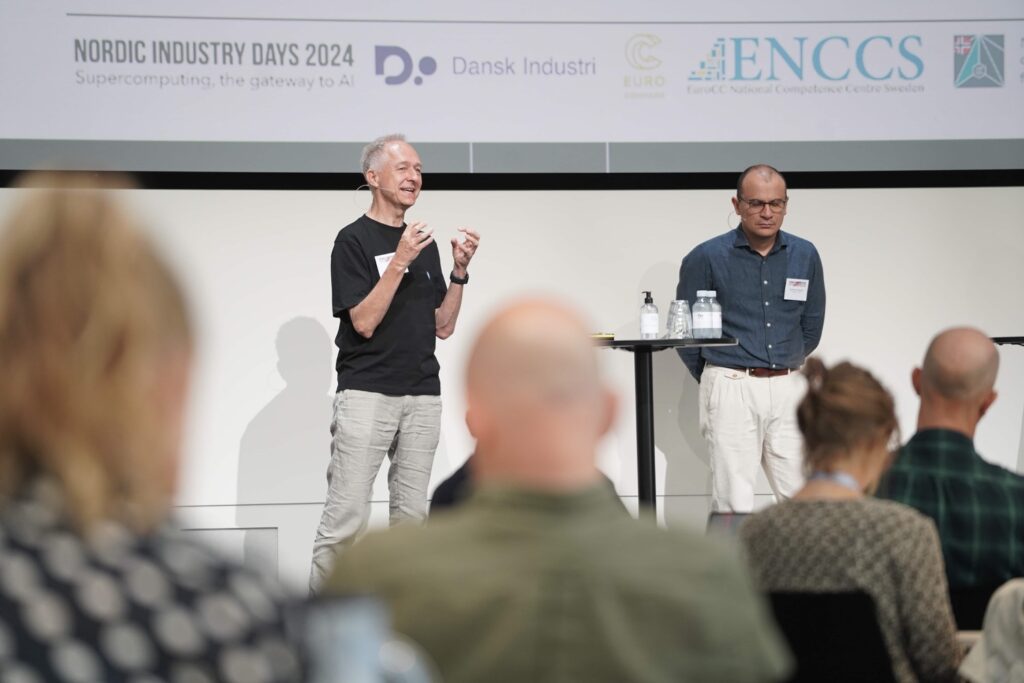ENCCS recently co-organised the Nordic Industry Days conference in Copenhagen together with Dansk Industri and the National Competence Centres of Denmark, Norway, Iceland, and Finland. The 2-day event took place on September 2-3 and involved representatives from the public and private sector, as well as academia from all Nordic countries.
The Nordic Industry Days provided great opportunities to gather valuable insights from stakeholders with a variety of complementary perspectives, including industry experts, as well as an excellent platform for discussions around leveraging supercomputing in general and leveraging supercomputing for AI in particular.
With an impressive turnout of 100+ representatives from various organisations, we were both impressed and invigorated by the active participation of all participants in the interactive sessions. Participants shared experiences of using supercomputers for (industrial and academic) research as well as development projects, helping attendees from across the public and private sector to better understand the possibilities of HPC for AI applications.
Recorded lectures are available on our YouTube channel: https://www.youtube.com/playlist?list=PL2GgjY1xUzfAvYKhEUqAGhZJZGtJwrYSh
The institutions
The first day started with introductions by Josephine Wood from EuroHPC JU, showcasing the supercomputing infrastructure and the initiatives from the European Commission regarding hardware and support for users. Andreas Holbak Espersen, the Director at DI Digital, presented the work of Dansk Industri and their network that supports innovation in Denmark.
During the first keynote session, Grazyna Piesiewicz (European Commission) presented the AI Factories-initiative, which aims to support HPC-enabled AI development in Europe. Lars Hård (Oxide AI) followed woth presenting his own HPC journey, from building his own cluster using parallelised PlayStation 3 consoles to fully utilising modern supercomputing infrastructure.
Grow a business with supercomputing and use cases from large industry
These keynotes were followed by presentations and discussion of SME use cases, with Jens Otto Kjærum (Dictus), Tapio Friberg (Iceye), and Pier Luigi Dovesi discussing how they take or haven taken advantage of the computational power of EuroHPC supercomputers in order to grow their business. Topics included speech technology, machine vision, and real-time intelligence for natural catastrophe response.

Subsequent to the SME use cases was a similar deep-dive into HPC use and computational workflows in large enterprises. Frederik Nikolaj Paulin Larsen (Rambøll DK), Knut Skogstrand Gjerden (Sintef Energy), Anders Broo (AstraZeneca) shared their strategies and approaches employed in projects requiring vast computational power, including CFP simulations for smoke development during fires in buildings, power grid optimisation, as well as drug candidate prioritisation (and more).
AI on supercomputing
Offering more of a bird’s-eye view, Magnus Sahlgren (AI Sweden) provided an overview of the rapid advancements in open Large Language Models (LLMs) with a special focus on the Nordic region. Their new project EurolinguaGPT will train a language model that will include 45 european languages and dialects.

Going back to HPC application for AI, Noah Torp-Smith (DBC – Digital Danish Library Center), Kimmo Pentikäinen (Supersight), and Guillaume Lanquepin (Norwegian Customs) presented some current AI project using supercomputers, before being joined on stage by Lars Hård (Oxide AI) to discuss challenges and oportunities for AI development on supercomputers.
Available infrastructure and support for users
Per Öster (CSC IT Center for Science Ltd), Viktor Rehnberg (Chalmers University of Technology), and Glenn Arild Haugland (Cegal Cetegra HPC) presented ways that AI researchers and data scientists from companies and academic institutions can benefit from the usage of supercomputer facilities within the EuroHPC JU programme.
To wrap things up, Laura Morselli (EuroHPC AI Support Centre) and Alan O’Cais (MultiXscale) analysed the various EuroHPC JU initiatives to support first-time industrial users, that are new to HPC. Johan Kristiansson (ENCCS) presented and discussed the ColonyOS platform that scales AI workloads by making the most out of the EuroHPC JU supercomputers together with local and cloud workflows.
Conclusion




In summary, the Nordic Industry Days highlighted the importance of overcoming barriers like data management, software stack optimisation, and workload parallelization to enable unlocking of the full potential of HPC for AI application.
Fostering greater collaboration between academia, industry, and the public sector will help in solving complex problems in (industrial and academic) R&D using HPC. We look forward to organising similar events in the future that can continue to drive innovation in this exciting field.
If you have questions or want to learn more about how to access and use EuroHPC JU resources, do not hesitate to contact your local National Competence Centre (i.e., e.g., us).








